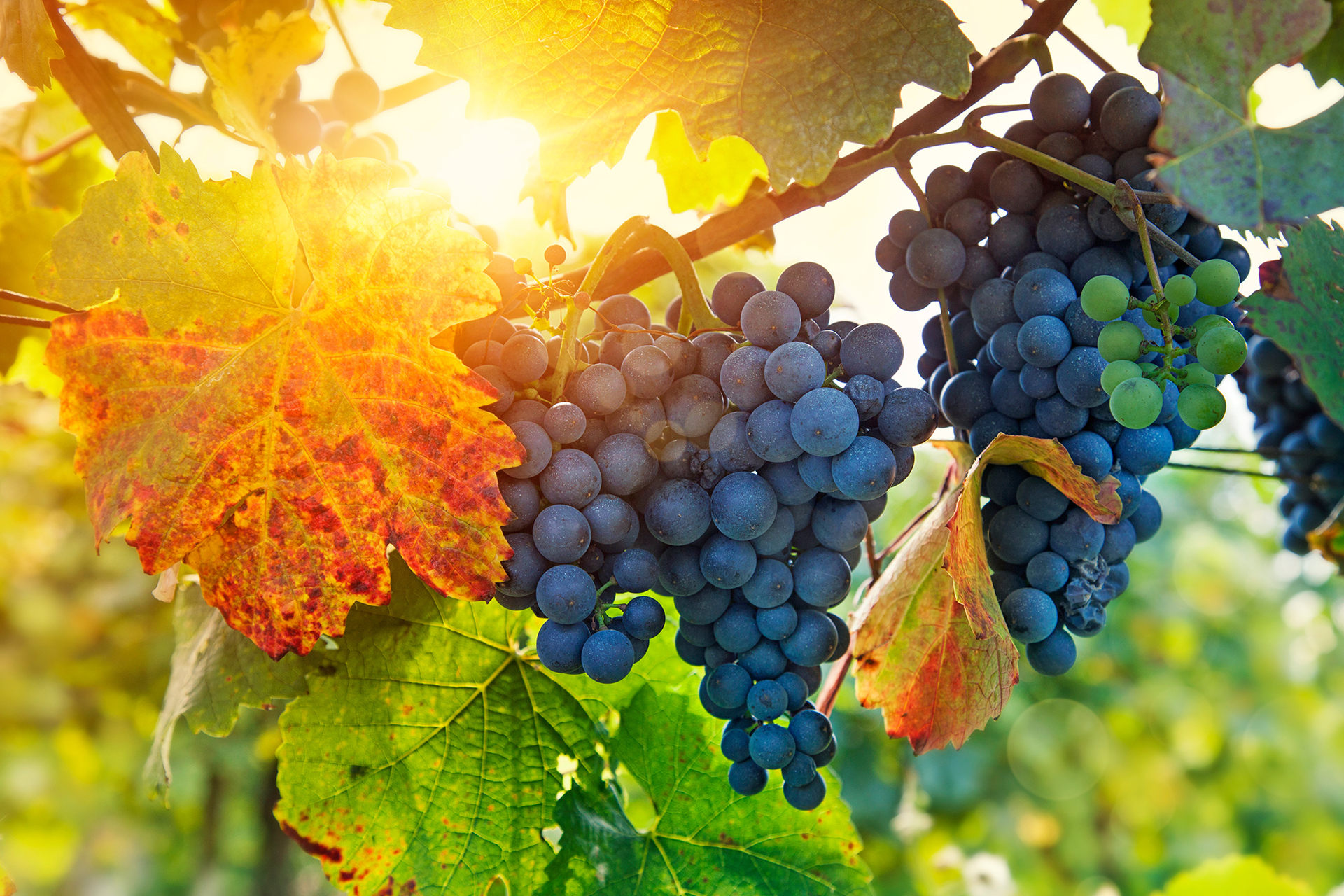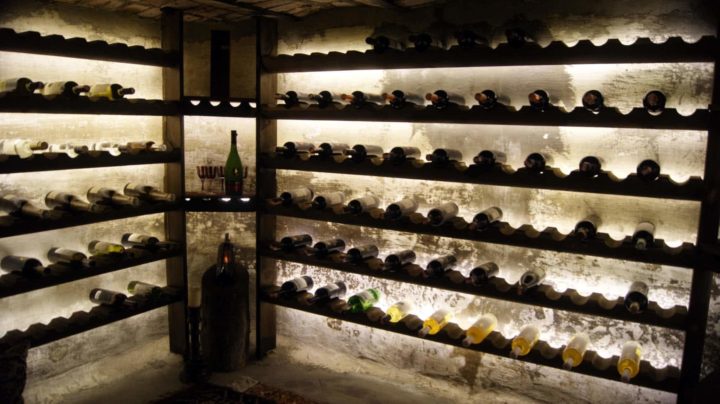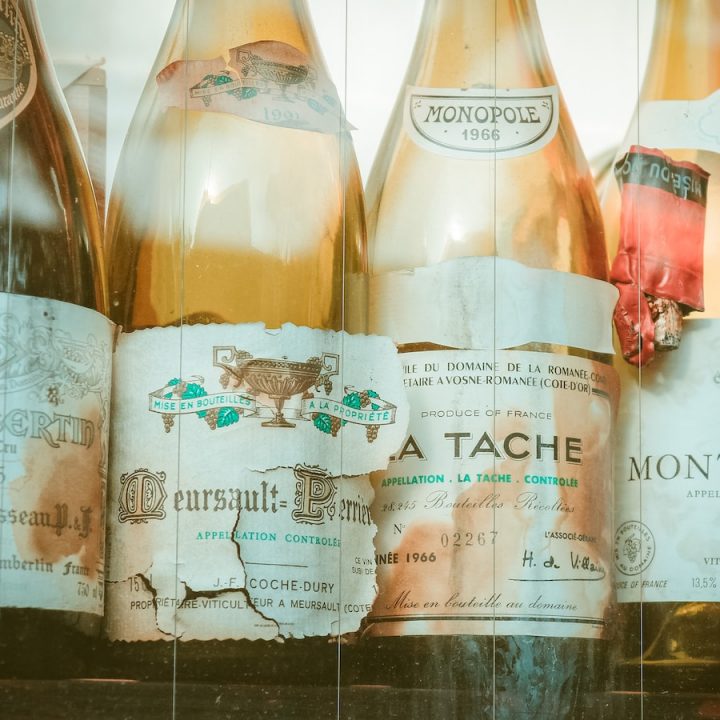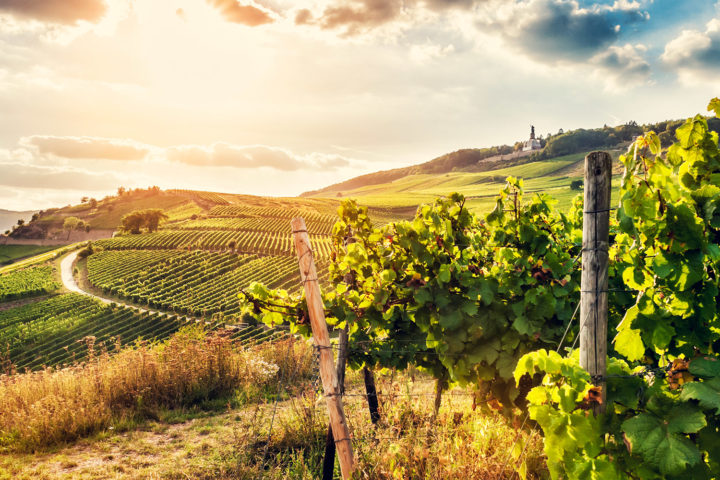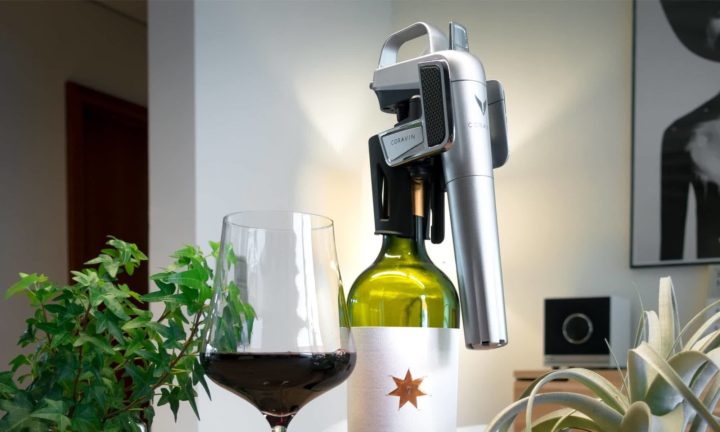The Blaufränkisch grape variety is known above all for its fruity, tannin-rich and acid-rich red wines, some of which have extraordinary storage potential. In its Austrian homeland, it is mainly grown in Burgenland, which is why the region is also known as the Blaufränkischland is called. In this article you will learn all the important information about the grape variety, its history, what demands it makes and what you can expect in the glass.
The history of the grape variety
The Austrian autochthonous grape variety Blaufränkisch is a spontaneous cross between Blue Cinnamon Grape and White Heunisch. Today’s research places the origin of the grape variety, which was first documented in the 18th century, in the historical Lower Styria. The area, which was then part of Austria, is now in Slovenia.
The Blaufränkisch found its way to Germany only from the middle of the 19th century. In this country, however, it is better known by its synonym Lemberger, which refers to the village of Lemberg. From the village, which today belongs to Slovenia, the first vines of the “Lemberger grape” were sold to Germany in 1877.
However, due to its more than 120 synonyms, it is assumed that the grape variety must be much older.
Where he got the name Blaufränkisch
Unlike the origin of its German name, the origin of the name “Blaufränkisch” is not proven beyond doubt. A widespread legend tells that the red grape variety owes its name to the Frankish king Charlemagne. He ordered the noble Franconian grape varieties to be separated from the inferior Heunian varieties.
The medieval term “Frankish” does not refer to a specific variety, but encompasses a whole group of varieties that were brought to Germany after Charlemagne’s conquest of Gaul. The group of Franconian grapes also includes Riesling, Silvaner and the Pinot noir. The Heunian vines take their name from the feared Huns and were commonly considered inferior.
Through this artificial selection, the Blaufränkisch is said to have developed.
It is grown in these wine regions
The largest area of vines planted with Blaufränkisch is found in Hungary, with over 7260 ha. However, the most important growing area is still in Austria, more precisely in Burgenland. In Germany it can be found on about 1900 ha. In this country, it is planted mainly in the region of Württemberg (about 1760 ha).
Thanks to its increasing popularity, Blaufränkisch can now be found in other areas of Europe and even in the New World. Thus, some small plots are also located in the USA, Canada and Australia.
Hungary
Hungary is the undisputed leader in the cultivation of the variety with about 7260 ha of vineyards. Although the international focus is mainly on Austria, in terms of quality the Hungarian Kékfrankos, as the grape variety is called here, do not have to hide. By the way, the name Kékfrankos translates as “blue Franconian” and is said to date back to the time when Napoleon passed through Hungary with his troops. The latter paid his soldiers with red francs, which were worth slightly less than blue francs – the official currency of France at the time. The winegrowers recognized the high demand of the Napoleonic troops for their wine and henceforth demanded payment in blue francs. According to legend, this is how the grape variety got its name.
The most important growing areas for high-quality wines of the variety are located on the southern shore of Lake Neusiedl, on Lake Balaton and in Villány, the most southern wine-growing region of Hungary.
Austria
Whoever says Blaufränkisch must automatically think of Austria. Here, the grape variety has experienced a true renaissance in recent decades and is enjoying growing popularity internationally. This ensured that the variety is now firmly associated with the country.
With just 2807 hectares (as of 2015), Austria has significantly less vineyard area than Hungary, but has a higher international reputation than its southeastern neighbor.
Almost all the vines of the variety are located in the eastern Burgenland. In particular, the Mittelburgenland should be mentioned here, which is also called Blaufränkischland among wine lovers. Some of the highest quality red wines in Austria are produced there. As of the 2005 vintage, Blaufränkisch from Mittelburgenland may be marketed as “Mittelburgenland DAC” (Districtus Austriae Controllatus). The Protected Designation of Origin was introduced in 2006 to recognize the high quality of the wines.
Other wine-growing areas for high-quality wines of the grape variety are Eisenberg DAC, Leithaberg DAC, Carnuntum DAC and the small area Rosalia DAC.
Germany
The common name of the red grape variety in Germany is (Blauer) Lemberger. However, it is also known by its synonym (Blauer) Limberger, under which the grape variety is classified in this country. Here, the variety is found mainly in the wine-growing region of Württemberg, where almost all of the vines of the red wine variety planted in Germany are located.
In the rest of the world
Meanwhile, the vine enjoys a steadily growing popularity internationally. Thus, some vineyards planted with Blaufränkisch can also be found in Canada, Peru, Chile or Switzerland.Soil and climate requirements
Blaufränkisch is a late ripening and early budding grape variety. This makes it particularly susceptible to late spring frosts. In general, the red grape variety makes high demands on the climatic conditions of its location. It grows best in warm regions and in areas protected from the wind. If temperatures are too cold during the flowering phase, the grape variety has a strong tendency to trickle.
As for the soil, the variety is quite unpretentious and tolerates even a high proportion of lime without significant problems. In general, however, it can be said that it prefers deep and loamy soils. Since Blaufränkisch tends to mass in nutrient-rich subsoils, it should be planted in poor soils to ensure high quality wines.
What does a Blaufränkisch wine taste like
Blaufränkisch wines sometimes show remarkable qualities and intense fruit aromas, perfectly balanced by fresh acidity. Due to the thick skin of its berries, the wines have a high tannin content, which gives them an extraordinary storage potential. A high quality Blaufränkisch can easily age for 10 to 15 years. Top wines even 50 and longer. Aged wines are characterized by a complex, deep and elegant character.
During aging, the tannins combine with the colorants of the wine, precipitate and deposit at the bottom of the bottle as a deposit. For this reason, a mature Blaufränkisch wine must almost always be decanted.
Wines of the grape variety are served at 15-20 °C. Where light and fruity representatives come rather cool and great drops on the warmer side in the glass.
Its aromas and flavor profile
Depending on the quality of harvest and aging, numerous variants of Blaufränkisch can be found. From light, fruit-driven wines to intense, earthy drops with high tannin content.
Its fruity representatives almost always show aromas of sour cherries, blackberries, plums and black currants on the nose.
Wines of the grape variety that have been aged in wooden barrels often have earthy and sweet notes of vanilla, dark chocolate, pepper and allspice.
On the palate, the Blaufränkisch is also multifaceted, depending on the variant. On the one hand, there are the light, simple and fruity wines, mostly aged in steel tanks. These provide the perfect introduction for newcomers to the grape variety. On the other hand, there are the extract-rich Blaufränkisch, often aged in large wooden barrels (but also in barrique), which present themselves with a deep black-red in the glass and reveal an intense but spicy spectrum of aromas on the nose.
These dishes go well with Blaufränkisch
Austria’s parade red wine variety is suitable as an excellent companion for a variety of dishes. Light and fruity wines of the grape variety are excellent with a hearty snack with sausage and round off stewed vegetables. They are suitable as a general wine recommendation for the next barbecue.
Its tannic representatives literally scream for protein and fat. They are the first choice with entrecôte, wild fowl or lamb.
